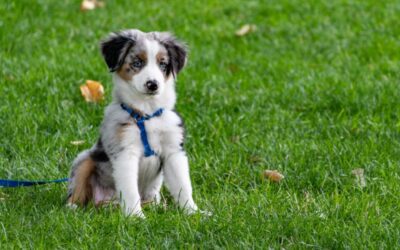Yes, dogs can safely chew on deer legs, provided they are raw and from a trusted source. Deer legs, often sold as venison bones, can be a natural and beneficial chew for dogs.
Chewing on deer legs, or venison bones, is an activity many dog owners consider for their pets. These chews provide mental stimulation and can help maintain healthy teeth and gums. Rich in nutrients, they may also contribute to a dog’s well-rounded diet when given as an occasional treat.
Due to the dense and hard nature of deer legs, they are less prone to splintering compared to other bones, making them a safer option for powerful chewers. Nevertheless, it is essential to supervise your dog while they gnaw on these bones to prevent any choking hazards or ingestion of large bone fragments. High-quality deer legs, free from additives and preservatives, ensure your furry friend enjoys their chew without any unnecessary health risks. Always choose chews that are appropriate for your dog’s size and chewing habits to ensure the best possible experience for your canine companion.
Chewing Instincts In Dogs
Chewing is key to dogs’ health. It’s deep in their nature. Dogs feel happy when they chew. Items like deer legs can help. They are good for dog teeth too.
Clean teeth and strong jaws come from regular chewing. Deer legs are tough and good for this. The action of chewing can stop tartar build-up.
- Chewing helps dogs feel calm and busy.
- It stops them from feeling bored.
- Deer legs are a safe toy for this need.
Introduction To Deer Legs For Dogs
Dog owners often seek safe chewing options for their pets. Deer legs are a popular choice. These chews are natural and long-lasting. They help with a dog’s need to chew. Many vets and pet experts recommend them. Dogs enjoy the taste and texture of deer legs. They are a good alternative to rawhide. Deer legs are less likely to splinter compared to other bones. This makes them a safer option for your pet.
| Nutrient | Benefit |
|---|---|
| Protein | Builds muscle, supports immune function |
| Calcium & Phosphorus | Strengthens bones and teeth |
| Marrow | Provides healthy fats, nutrients for energy |
Deer legs contain important nutrients that support a dog’s health. Protein in deer legs helps build muscles. Calcium and phosphorus make bones and teeth strong. Marrow inside deer legs has healthy fats. These fats give dogs energy to play and stay active.
Safety Concerns
Dogs chewing on deer legs can face several safety issues. Bone fragments could break off during chewing. These sharp pieces might hurt your dog’s mouth, throat, or intestines. Chewed bones can also cause choking or blockages.
Diseases from wild animals are another risk. Deer legs may carry harmful germs. These can make your dog very sick. It’s important to ensure the chew is clean and safe before giving it to your pet.
Preparing Deer Legs For Your Dog
Deer legs can be a hearty chew for dogs. But it is essential to clean them right. First, remove all fur and meat leftover. Doing this prevents bacteria and disease.
Use a mix of water and mild detergent to scrub the bones. Rinse the legs thoroughly to take off the soap. Let them dry completely before giving them to your dog.
Watch your dog as they chew to avoid choking incidents. These legs are large bones, so give them in moderation. Check if the bone breaks off into small pieces. It’s best to remove them immediately to prevent hurting your dog.
Deer Legs Vs. Other Chew Options
Dog owners often search for safe chewing options for their pets. Deer legs provide a natural and durable choice. They are generally more robust than traditional rawhide chews. Dogs enjoy these due to their hardness and ability to last longer.
Other chews like bully sticks or antlers also offer a tough chew experience. Yet, deer legs may edge out in terms of longevity and price. The key is to find the right balance between durability and safety for your canine’s dental health. Always supervise your dog with any chew to ensure they are not swallowing large pieces.
| Chew Type | Hardness | Durability |
|---|---|---|
| Deer Legs | Very Hard | Most Durable |
| Bully Sticks | Hard | Moderately Durable |
| Antlers | Very Hard | Highly Durable |
| Rawhide Chews | Medium | Less Durable |
Veterinary Insights
Dogs can have deer legs, but pet owners must be cautious. It’s key to know your dog’s allergies and food sensitivities. Veterinary guidance ensures safety in giving deer legs as a chew.
Dogs with sensitive stomachs or unique diets might react badly. This could mean itchy skin or tummy trouble. Always do a trial run with supervision. Notice how your dog handles the new treat.
| Check for | What to do |
|---|---|
| Allergic reactions | Stop giving deer legs |
| Digestive changes | Consult your vet |
| Chewing behavior | Ensure it’s safe and proper |
Frequently Asked Questions Of Can Dogs Chew On Deer Legs
Are Deer Legs Safe For Dogs To Chew?
Deer legs can be safe for dogs to chew on if they are prepared correctly, free from sharp fragments, and sourced from reputable suppliers. Always supervise your pet to prevent choking or ingestion of large pieces.
Can Chewing Deer Legs Benefit My Dog’s Dental Health?
Chewing on deer legs can help maintain your dog’s dental health by reducing plaque and tartar buildup. It’s a natural way to clean teeth and strengthen gums, but should complement regular dental care routines.
What Are The Nutritional Benefits Of Deer Legs For Dogs?
Deer legs offer nutritional benefits such as protein and minerals like calcium. They are low in fat and help provide a balanced raw addition to a dog’s diet, supporting overall health when given as an occasional treat.
How Long Should I Let My Dog Chew On A Deer Leg?
Limit chew sessions with deer legs to 10-15 minutes to prevent wear on your dog’s teeth and avoid overconsumption. Monitor your dog during chewing for safety.
Conclusion
As we wrap up, remember deer legs can be a safe chew option for dogs with supervision. They provide dental benefits and satisfy natural urges. Yet, consult your vet first to ensure it’s right for your furry friend. Choose responsibly sourced deer legs and monitor your pet’s chewing sessions.
Happy and healthy munching to your canine companion!




